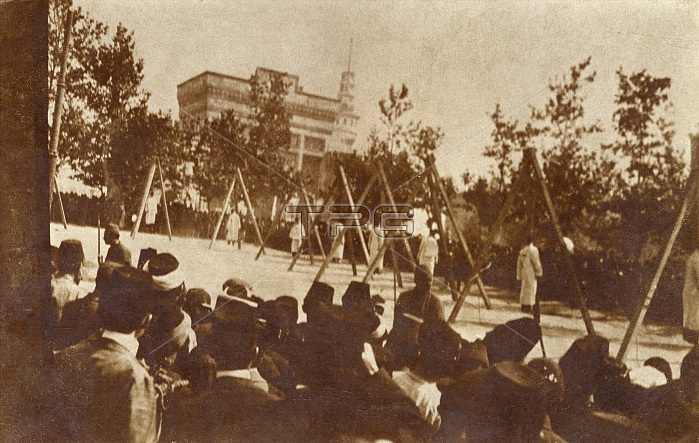
The public execution of four Armenians at Pera, close to the Golden Horn. The Armenian Genocide (Turkish: Ermeni Soyk?r?m?), also known as the Armenian Holocaust, the Armenian Massacres and, by Armenians, the Great Calamity - refers to the deliberate and systematic destruction (genocide) of the Armenian population of the Ottoman Empire during and just after World War I. It was characterised by the use of massacres, and the use of deportations involving forced marches under conditions designed to lead to the death of the deportees, with the total number of Armenian deaths generally held to have been between one and one-and-a-half million.Other ethnic groups were similarly attacked by the Empire during this period, including Assyrians and Greeks, and some scholars consider the events to be part of the same policy of extermination. It is widely acknowledged to have been one of the first modern, systematic genocides, as many Western sources point to the sheer scale of the death toll as evidence for a systematic, organized plan to eliminate the Armenians. The date of the onset of the genocide is conventionally held to be April 24, 1915, the day that Ottoman authorities arrested some 250 Armenian intellectuals and community leaders in Constantinople. Thereafter, the Ottoman military uprooted Armenians from their homes and forced them to march for hundreds of miles, depriving them of food and water, to the desert of what is now Syria. Massacres were indiscriminate of age or gender, with rape and other sexual abuse commonplace.
| px | px | dpi | = | cm | x | cm | = | MB |
Details
Creative#:
TOP23775519
Source:
達志影像
Authorization Type:
RM
Release Information:
須由TPG 完整授權
Model Release:
No
Property Release:
No
Right to Privacy:
No
Same folder images:

 Loading
Loading